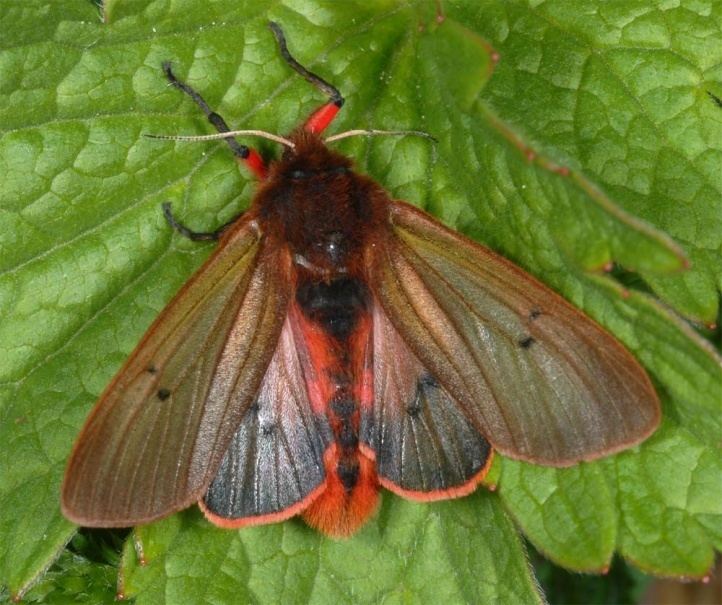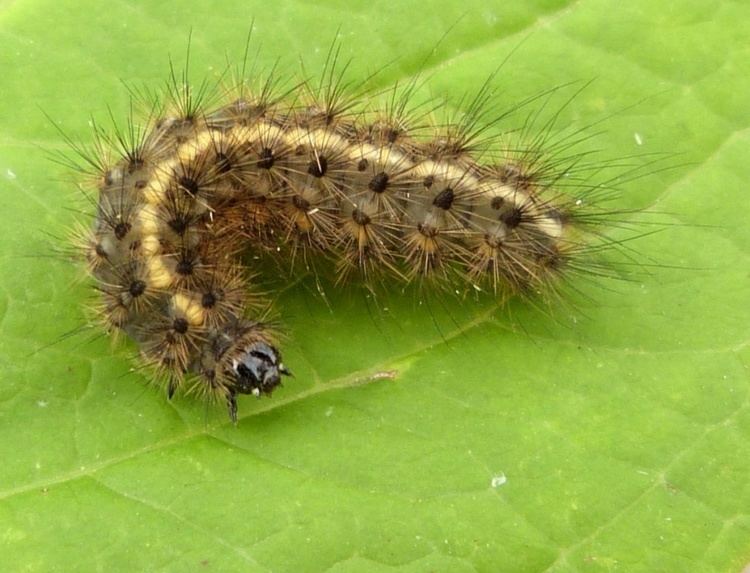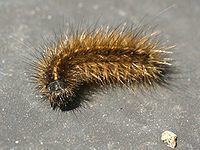Rank Species | Genus Phragmatobia Higher classification Phragmatobia | |
 | ||
Similar Phragmatobia, Butterflies and moths, Arctiinae, Spilosoma lubricipeda, Buff ermine | ||
Phragmatobia fuliginosa, the ruby tiger, is a moth of the family Erebidae. It is found in the Palearctic ecozone. There are a number of recognized subspecies, such as P. f. melitensis in Malta and P. f. borealis in Scotland.
Contents

Technical description and variation

The wingspan is 35–45 mm. The ruby tiger has the thorax and forewing dark reddish brown with a blackish comma-shaped spot at the apex of the cell, edged with carmine. Hindwing carmine, more or less hyaline in the costal area, with more or less confluent black spots before the margin and at the apex of the cell. The name-typical form fuliginosa L. has the forewing rather densely scaled and the hindwing bright rose-red with distinct black spots. Underside strongly suffused with purple-pink.- borealis Stgr., which has vivid black markings and in which the red is confined to the sides of the abdomen and the anal part of the hindwing. ab. subnigra Mill., with very dark forewing, must not be confused with the northern form; it is scarcely darker than true fuliginosa, and not so strongly hyaline as borealis. In ab. flavescens Schultz the abdomen and hindwing are yellow instead of red. — amurensis Stgr. [full species Phragmatobia amurensis Seitz, 1910 is a form of the same size as fervida, but is in colour almost exactly like fuliginosa, the forewing however being broader. - pulverulenta Alph. is a transition to fervida, the forewing being lighter than in fuliginosa, more yellowish brown,and the hindwing lighter and clearer, more flesh-colour, and with well-defined marginal spots; from Turkestan and northern China. — fervida Stgr.is the largest and lightest form. The forewing is strongly tinged with yellowish red, and therefore almost the same colour as the hindwing, the latter bears strongly reduced dots; South Europe, North Africa, local. — placida Friv.from South-East Europe, Asia, Minor and Turkestan, is a very large form, usually regarded as a separate species [Phragmatobia placida] (Frivaldszky, 1835)] , with the forewing more triangular and uniformly dark brown, and the hindwing pure light pink spotted with black. The forewing bears a carmine dot at the upper angle of the cell.
Subspecies

Biology

The moth flies from May to August depending on the location. The egg is reddish grey. The larva is light or dark grey with a black brown head. The entire body is covered with foxy red hairs; these hairs are always more black brown in placida, and sometimes so in fuliginosa. In June, late autumn and after hibernation in April, on low-growing plants, on high-roads, railway embankments and waste fields. On warm days in the winter the larvae sometimes leave their hiding-places and are then found on fieldpaths and roads, running about quickly. The caterpillars feed on various herbaceous plants. Rubus fruticosus, Prunus spinosa, Filipendula ulmaria, Plantago lanceolata, Senecio jacobaea , Taraxacum officinale .The pupa is black with the abdomen marked with yellow in the segmental incision
